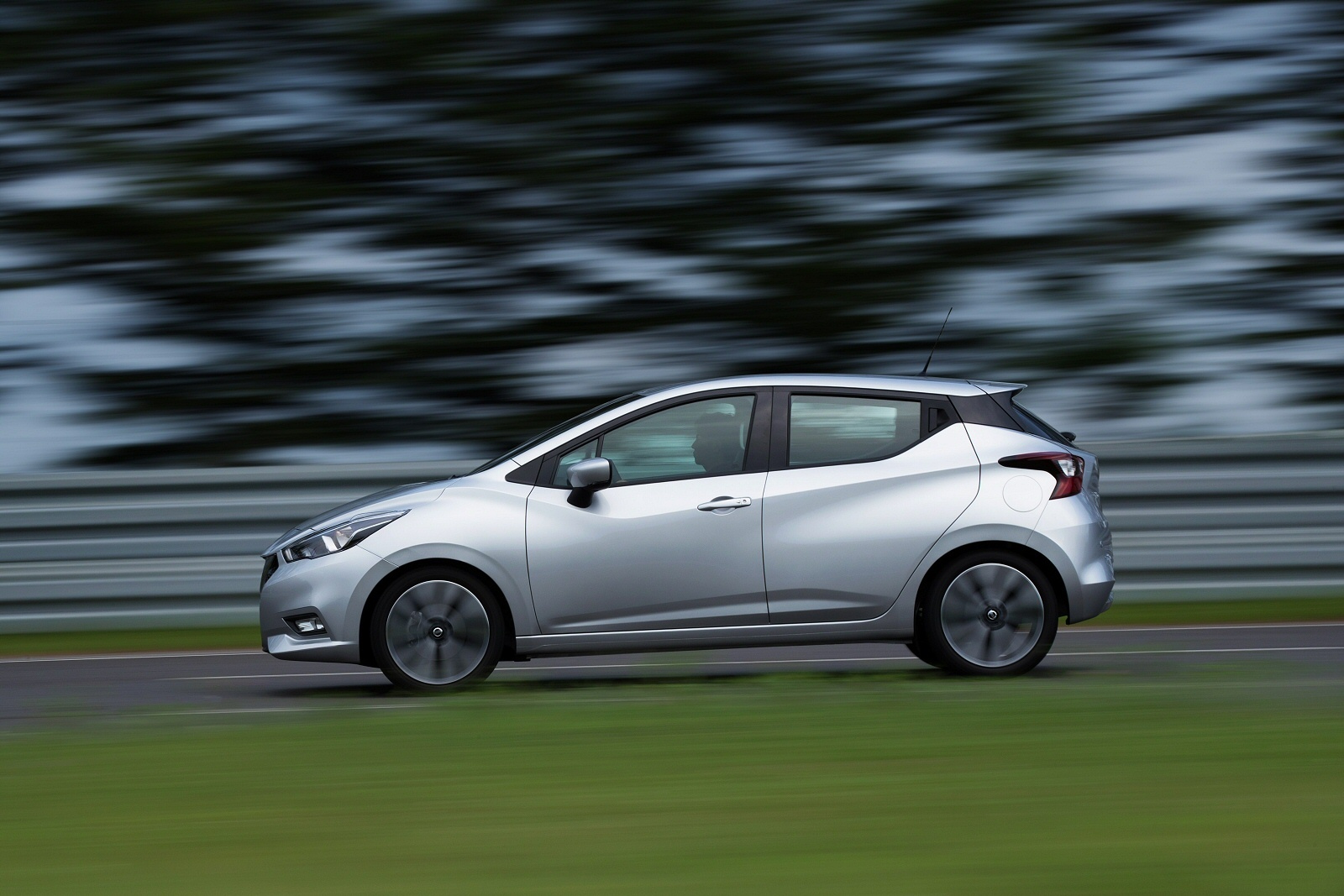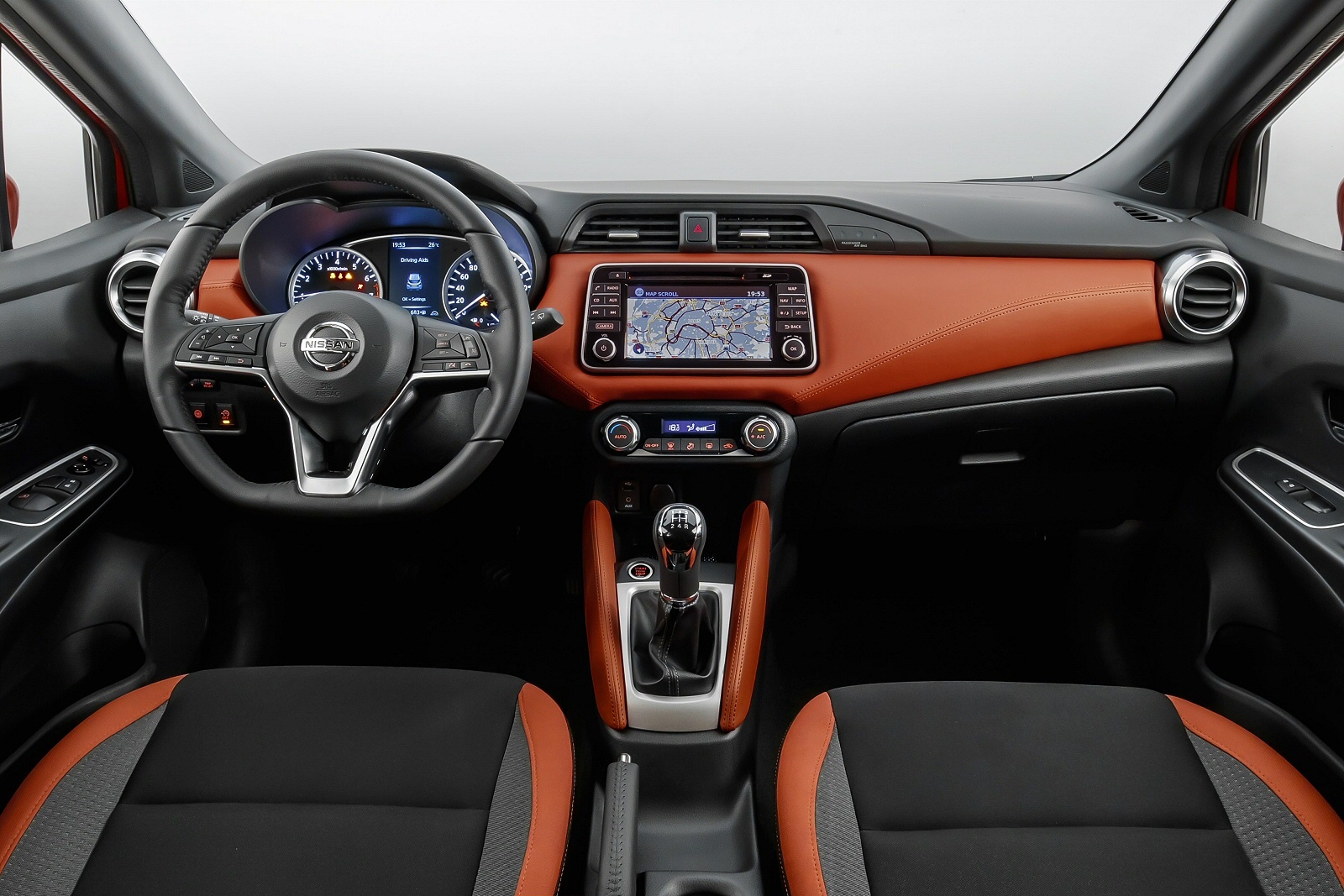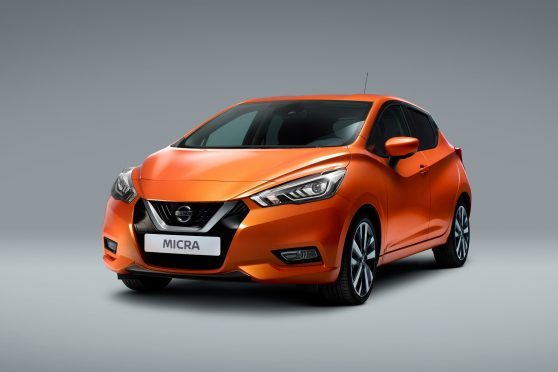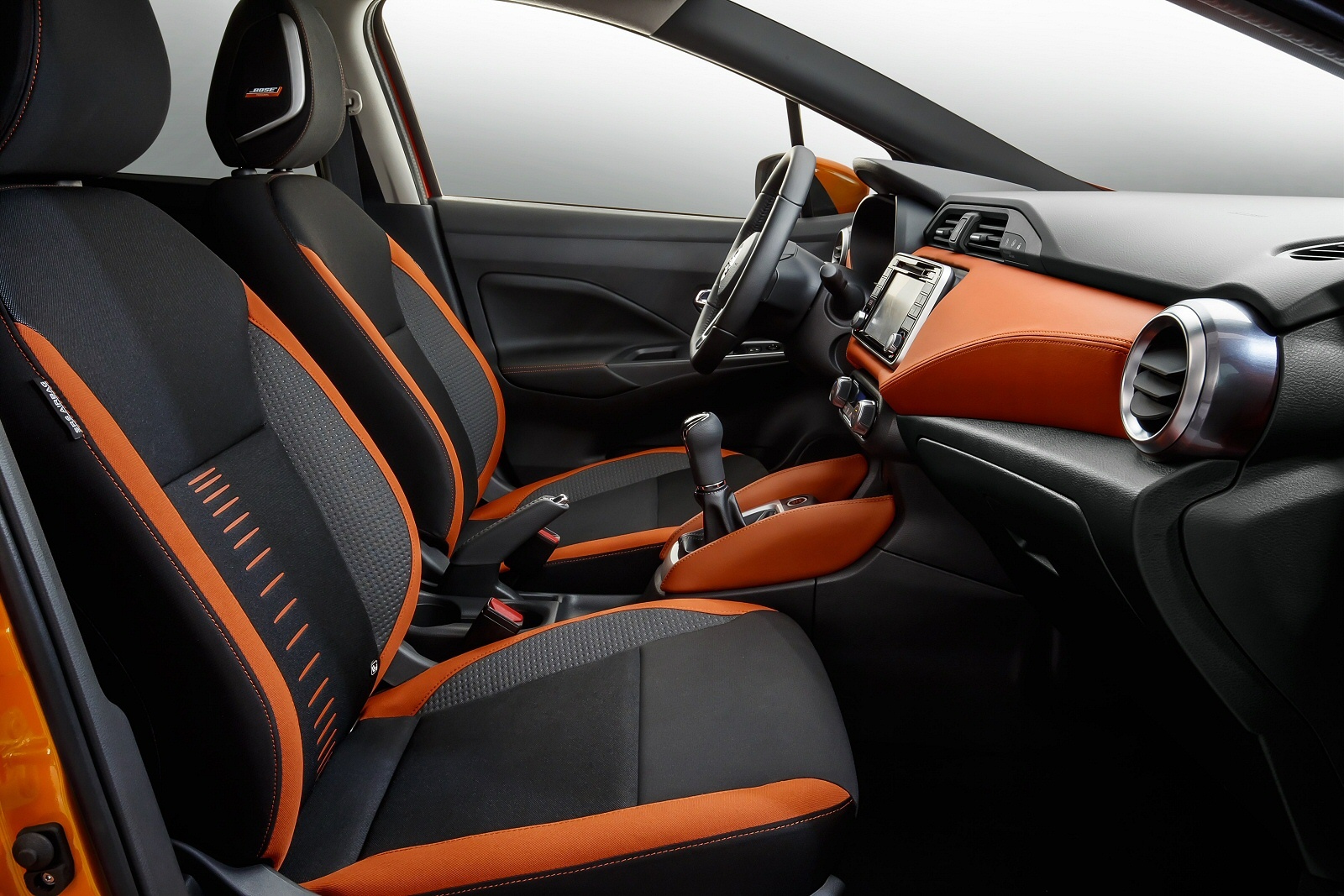Here’s a very different-looking Nissan Micra, with this Gen5 version better in virtually every way.
Under the bonnet, buyers get the choice of either a naturally aspirated 73bhp 1.0-litre petrol engine, a 0.9-litre turbocharged three-cylinder petrol unit or a 1.5-litre diesel, the latter two powerplants both developing 89bhp. Of perhaps more importance are the efforts that have been put in to improve the way that the new Micra drives.
This model now features what Nissan calls Active Ride Control for enhanced ride comfort, and Active Trace Control for reduced understeer and sharper handling – both features borrowed from the brand’s larger Qashqai and X-Trail models.

If you’re used to the conservative design of the old fourth-generation Micra, you may need to sit down and have a cup of hot sweet tea after looking at this one.
The styling remains faithful to that of the 2015 Geneva Motor Show Sway concept car that led to the development of this one.
It’s a riot of emotive curves and creases, with design cues including a distinctive V-motion grille, from where a sharp-edged character line runs through to the rear end with its boomerang-shaped lights. There’s a so-called ‘floating roof’, an effect created by blacked-out rear C-pillars that hide the rear door handles so as to create a coupe-like look.
All of this is matched by a wider selection of more vivid colours, including a particularly vibrant Energy Orange, as seen here.
Inside, much attention has been paid to driver comfort, with a lower driving position for a more secure driving feel.

Prices start at around £12,000 and there are five grade levels to choose from – Visia, Visia+, Acenta, N-Connecta and Tekna. Buyers will be limited to a five-door hatch bodystyle.
Nissan hopes that the car will appeal to downsizers, people trading out of larger cars into smaller ones that remain plush and technologically savvy.
However style-led and fashion-conscious any modern supermini might be, it’s not going to sell unless its running costs remain pragmatic.
Here, that’s not an issue. The entry-level 73bhp 1.2-litre petrol engine isn’t particularly frugal but the 0.9-litre unit achieves a much better combination of performance and efficiency. Ideally in this regard though, you’d go for the 1.5-litre dCi diesel. Here, you can expect around 80mpg on the combined cycle and under 95g/km of CO2
.In the supermini segment, it’s going to take a very special car to divert customers from their Fiestas and Corsas. If this new Micra isn’t that car, then it’s hard to see what else the Japanese brand could have done. In virtually every respect, it’s a big step forward from its forgettable predecessor. As a result, what’s been delivered here is a supermini able to duke it out with the class best.
A heavily revised interior helps in that regard and the dramatic exterior styling also does much to reinforce the perception of quality.
The Micra’s chances aren’t going to be transformed overnight but this is now a car you could realistically recommend to somebody who doesn’t want to follow the crowd.
I think Nissan would call that a result.

